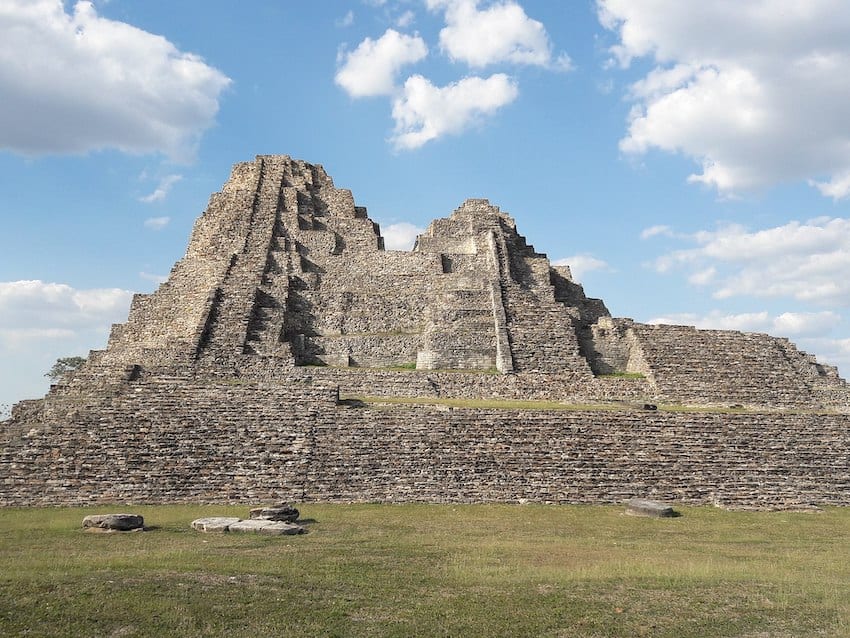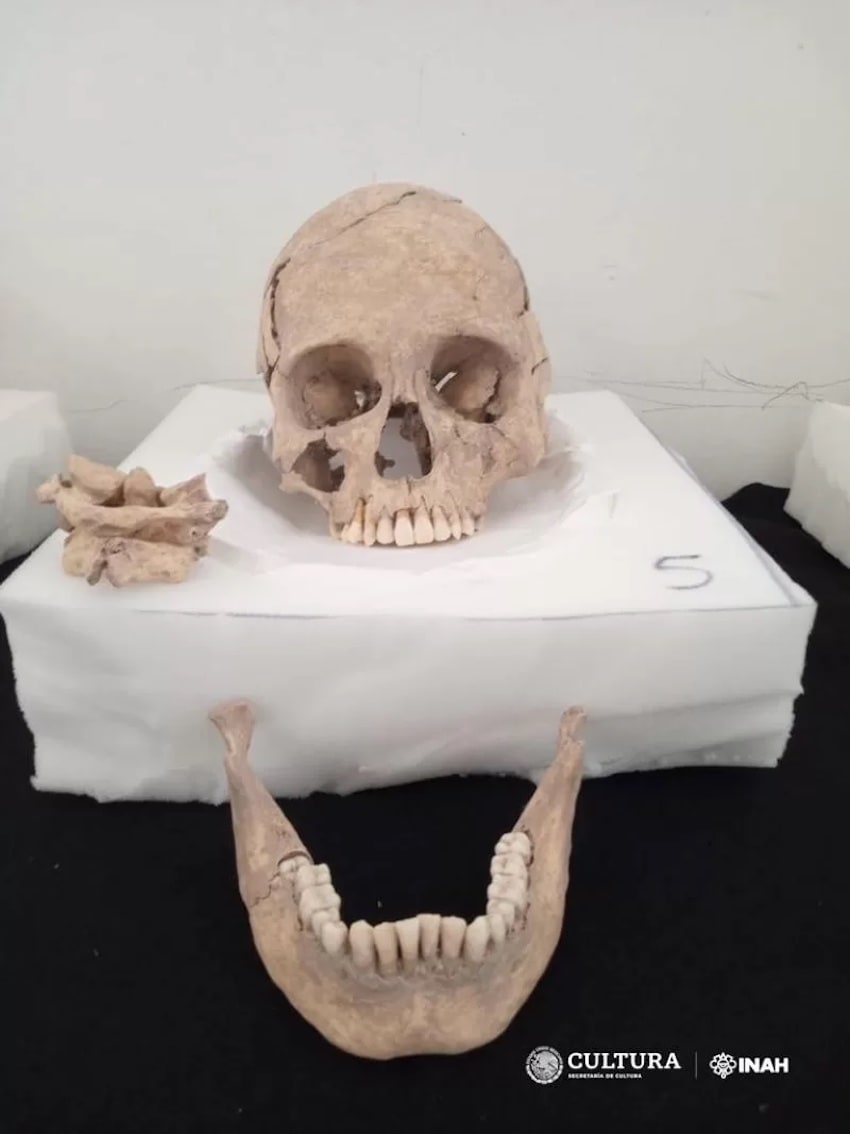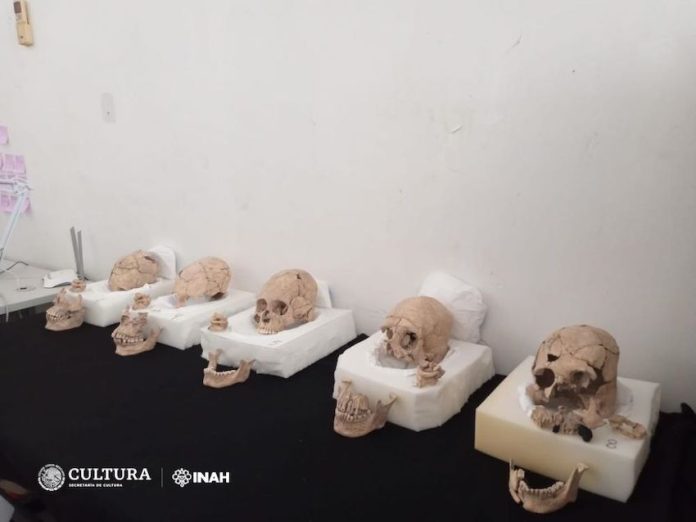An investigation of five skulls, discovered four months ago at an ancient Maya temple, revealed that at least two of the individuals had been decapitated in a human sacrifice ritual, the National Institute of Anthropology and History (INAH) announced this week.
In April, 13 human burials were found during excavations at the Moral-Reforma Archaeological Zone in the southern state of Tabasco.

Some of the remains were in or near a temple-pyramid structure, and archaeologists dated the burials to the Late Classic period between A.D. 600 and 900. An analysis of skulls, jaw fragments and various bones pointed to decapitation and dismemberment, said Francisco Apolinar Cuevas, the director of the Moral-Reforma archaeological project.
Research over the past few months focused on five skulls and their dental remains, found in front of a stairway of the temple-pyramid structure. It was determined that all came from males, two between 17 and 25 years old, one between 25 and 35, and two between 33 and 45.
With two of the skulls, horizontal cut marks were observed in the craniocervical junction, which includes the bone that forms the base of the skull and the first two bones in the upper spine upon which the head rests.
The cut marks revealed “the use of a sharp object to extract the skull,” said Miriam Angélica Camacho Martínez, an anthropologist from INAH’s Tabasco Center who was in charge of analyzing the remains, “although it is difficult to determine if this injury was the cause of death or if it was done post-mortem.”

She also pointed out that in evaluating cultural modifications in the set of five skulls, researchers were able to confirm that all the individuals enjoyed a high status in pre-Columbian Maya society (all of them displayed a head-shaping modification done at an early age).
Two of the individuals had jade dental inlays, and some of the deceased were covered with red pigment, she added, without saying what that meant, other than it will help scientists identify which bones go together.
Camacho remarked that analysis will continue on the remains from the April finding and from other excavations at the Moral-Reforma Archaeological Zone. In all, 44 human burials have been discovered in recent months, covering some 1,200 years (from B.C. 300 to A.D. 900).
The excavations are being carried out through the Program for the Improvement of Archaeological Zones (Promeza), and the research is taking place at INAH facilities in Villahermosa, Tabasco.
With reports from MXCity and La Jornada
